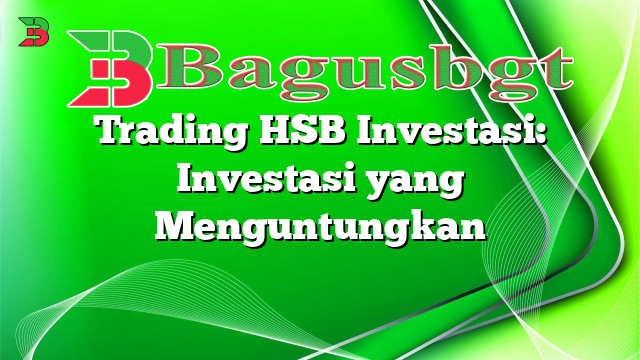Hello readers,
Introduction
In the fast-paced world of foreign exchange trading, high frequency trading (HFT) has emerged as a popular strategy among traders. HFT is a technique that uses powerful computers and complex algorithms to execute a large number of trades within seconds. In this article, we will explore the ins and outs of high frequency trading in the forex market and discuss its advantages and disadvantages.
The Basics of High Frequency Trading
High frequency trading involves the use of sophisticated computer programs that analyze market data and execute trades at lightning-fast speeds. These programs rely on algorithms that are designed to identify profitable opportunities in the market and execute trades accordingly. The main goal of HFT is to capitalize on small price movements and generate profits in a short period of time.
The Advantages of High Frequency Trading
1. Speed: One of the biggest advantages of high frequency trading is its ability to execute trades within milliseconds. This allows traders to take advantage of even the smallest price movements and capitalize on profitable opportunities.
2. Liquidity: HFT has significantly increased market liquidity by providing a large number of buy and sell orders. This ensures that traders can enter and exit positions quickly without affecting the market price.
3. Lower Transaction Costs: HFT has reduced transaction costs for both individual traders and institutions. The high volume of trades executed by HFT firms allows them to negotiate lower commission rates with brokers.
4. Reduced Human Error: By relying on computer algorithms, HFT eliminates the possibility of human error in trading. This can lead to more accurate and efficient execution of trades.
5. Increased Market Efficiency: HFT has been argued to improve market efficiency by quickly incorporating new information into prices. This prevents any time lag between the release of news and its impact on prices.
The Disadvantages of High Frequency Trading
1. Market Manipulation: Critics argue that HFT can lead to market manipulation, as high-speed traders can take advantage of small price discrepancies and create artificial market movements.
2. Increased Volatility: HFT can increase market volatility, as large volumes of trades executed within a short period of time can amplify price fluctuations.
3. Lack of Transparency: The complex nature of HFT algorithms makes it difficult for regulators to monitor and regulate the market effectively. This lack of transparency can create an environment that is susceptible to manipulation.
4. Risk of System Failures: HFT relies heavily on technology, and any technical glitch or system failure can lead to significant financial losses. The “Flash Crash” of 2010, where the Dow Jones Industrial Average plunged nearly 1,000 points in minutes, is one example of the potential risks associated with HFT.
5. Unequal Access to Market Data: HFT firms often have access to market data and news ahead of other market participants. This unequal access can give them an unfair advantage and hinder market fairness.
Alternatives to High Frequency Trading Forex
While high frequency trading is a popular strategy, there are alternative approaches to forex trading that may suit different traders. Some of these alternatives include:
1. Swing Trading: This strategy involves holding positions for a few days to weeks, taking advantage of medium-term price fluctuations.
2. Position Trading: Position traders hold positions for weeks to months, aiming to profit from long-term trends in the market.
3. Algorithmic Trading: Algorithmic trading involves the use of computer programs to execute trades based on predefined rules. However, it does not rely on high-frequency execution and can be tailored to suit different trading styles.
4. Fundamental Analysis: This approach involves analyzing economic indicators, news events, and macroeconomic factors to make trading decisions. It focuses on the long-term outlook of currency pairs rather than short-term price movements.
High Frequency Trading Forex – Complete Information
| Aspect | Details |
|---|---|
| Definition | High frequency trading is a strategy that uses powerful computers and complex algorithms to execute a large number of trades within seconds. |
| Execution Speed | Trades are executed within milliseconds, taking advantage of small price movements. |
| Market Liquidity | HFT provides a large number of buy and sell orders, increasing market liquidity. |
| Transaction Costs | HFT has reduced transaction costs due to the high volume of trades. |
| Market Efficiency | HFT improves market efficiency by quickly incorporating new information into prices. |
| Market Manipulation | HFT can potentially lead to market manipulation through artificial market movements. |
| Volatility | HFT can increase market volatility due to large volumes of trades executed within a short period of time. |
| Transparency | The complex nature of HFT algorithms makes it difficult to regulate effectively. |
| Risk of System Failures | HFT is vulnerable to technical glitches or system failures, resulting in significant financial losses. |
| Unequal Access to Market Data | HFT firms often have access to market data ahead of other participants, creating an unfair advantage. |
Frequently Asked Questions (FAQ)
1. What is the main goal of high frequency trading in forex?High frequency trading aims to capitalize on small price movements and generate profits in a short period of time.
2. Can high frequency trading lead to market manipulation?Yes, high frequency trading can potentially lead to market manipulation as traders can create artificial market movements.
3. Are there any alternatives to high frequency trading in forex?Yes, some alternatives include swing trading, position trading, algorithmic trading, and fundamental analysis.
Conclusion
In conclusion, high frequency trading has revolutionized the forex market by providing traders with the ability to execute trades at lightning-fast speeds. While it offers advantages such as speed, liquidity, and reduced transaction costs, it also poses risks such as market manipulation, increased volatility, and system failures. Traders should consider alternative strategies that suit their trading style and risk tolerance. It is important for regulators to monitor and regulate the market effectively to ensure fairness and transparency. Understanding the intricacies of high frequency trading and its alternatives is crucial for any forex trader looking to navigate the dynamic world of currency trading.
 Bagus Banget Collection of the latest information from various reliable sources
Bagus Banget Collection of the latest information from various reliable sources




